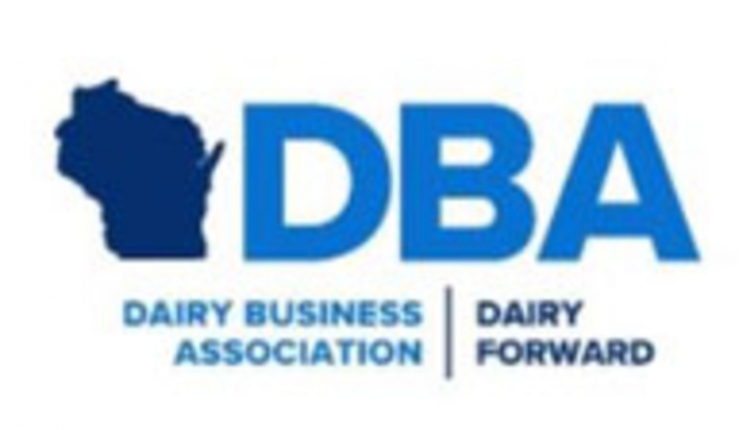
Newly released data in a nationally recognized farm-level sustainability project in southwestern Wisconsin shows that farmers are making continued progress in key environmental categories while at the same time remaining profitable.
Entering its third year, the pilot project involves 15 farmers who are teamed up with partners in the dairy food supply chain, an environmental group and others. The farmers are tailoring conservation practices most effective for their individual farms and documenting the environmental and financial effects. The goals: protect the environment, remain profitable and demonstrate to communities, customers and regulators that farmers are taking action on sustainability.
An analysis of performance to date showed the farms’ practices are contributing to increased protection of water quality and significant reductions in greenhouse gas emissions, without losing crop yields and with larger gross returns.

“It is rewarding to see this comprehensive approach to farm-level conservation making a positive difference,” said dairy farmer Jean Stauffacher, co-owner of Highway Dairy Farms, a participant in the project. “We are rolling up our sleeves and doing the hard work. There is still more to be done; we don’t have it all figured out. But we realize this is a long-term commitment. Tailoring our practices and measuring results is becoming the standard way of doing business.”
Stauffacher and other farmers in the project are part of Lafayette Ag Stewardship Alliance (LASA), a farmer-led conservation group in Lafayette County.
The assessment uses nationally accepted metrics from Field to Market: The Alliance for Sustainable Agriculture to address on-farm sustainability indicators, such as greenhouse gases. A tool called Prioritize, Target and Measure Application (PTMApp) is being used for measuring impact on waterways.
Changes farmers are making include practices like planting cover crops, using no-tillage and reduce-tillage, and creating nutrient management plans. The findings are detailed in a 40-page report.
Among them:
- A cumulative water quality score increased 18 percent from 2019, when baseline data was established, to 2021. This means fewer nutrients were able to leave the field from the surface or subsurface and make their way into streams and rivers.
- Participants decreased greenhouse gas emissions by 15 percent over that time period.
- Energy used for producing the crops decreased by 15 percent. For perspective, the amount of energy used to grow and harvest crops on nine acres in the project is equivalent to the average home energy consumption in the U.S. each year.
- Farmers are cutting sediment loss in the watershed by an estimated 56,700 tons per year as of 2021, assuming equal adoption of practices across all farms and fields. That is the equivalent of 4,200 dump truck loads of sediment per year or 11½ per day not leaving the farm fields.
- The average gross return per acre for corn grain production was $917.26 in 2020, the latest available data. This is $180.67 greater than the average among Wisconsin farms included in a University of Minnesota benchmarking database called FINBIN. The farms in the database are not participating in the project.
- The average gross return per acre for corn silage production in 2020 was $1,020.25, which is $122.18 greater than the average.
- The average gross return per ton for alfalfa production in 2020 was $1,646.05, which is $419.44 greater than the average.
- Scores for some of the project’s key categories showed declines in the three-year average from 2019 to 2021. For example, overall there was a slight decrease in the amount of carbon sequestration in the soil over the three years. However, data from 2021 alone suggests that on average, fields are still showing positive scores for this metric and likely gaining soil carbon.
LASA worked with two main partners to develop the project: Farmers for Sustainable Food, a nonprofit organization of food system stakeholders, and Grande Cheese Company, an Italian cheese manufacturer in southeastern Wisconsin. A host of others, including The Nature Conservancy and Southwest Wisconsin Technical College, are supporting the effort. The broad collaboration drew a national sustainability award last year from the Innovation Center for U.S. Dairy.

“A key to success in our project is the diverse partners who help make it happen,” said Lauren Brey, managing director of Farmers for Sustainable Food (FSF). “From the farmers doing the work, to the team documenting what is happening in the fields and analyzing the data, to organizations providing guidance and funding, each group brings value to the collaboration. It’s proof that we are more successful when we work together toward common goals.”
Brey said she is confident other farmers around the country could see positive results by replicating the project. It’s based on a first-of-its-kind framework the partners have made available at no cost. FSF is already supporting similar projects across the Upper Midwest with other farmer-led groups, processors and individual farms. The Lafayette County project is set to run for five years.

“Grande takes great pride in the growth and development of its producer-direct milk supply. Developing a common vision that supports the growth of both partners, while supporting our customers, is critical,” said Greg Siegenthaler, vice president milk marketing and supply chain management for the company.
“As the dairy industry evolves, the days of simply exchanging money for the transfer of milk are over. Looking forward, it will be important for processors to understand key components of the producer-processor relationship, extending beyond the milk itself,” he said. “The environmental impacts associated with the production of milk play a role in how dairy products ultimately go to market.”
The Nature Conservancy provides environmental insight and funding support for the project. Director of Agriculture Strategies Steve Richter said this is a long-term commitment, but he is impressed with the results thus far.

“This project illustrates the value of many different partners coming together, all adding a different perspective and playing a different role to make this a success,” Richter said. “As a group, we’ve brought together incentives for conservation practices, a national model for farmers to track conservation efforts, and an economic study showing the value of soil health practices, and the results we’re seeing show that both the farmer and the environment are benefiting.”
Tweet about this:
Farms in nationally recognized pilot #sustainability project see positive progress @LafayetteAg @FarmersForFood @DairyGood @houstoneng @nature_org @FieldtoMarket #FarmersForSustainableFood
Multimedia:
Doug Thomas, senior project manager at Houston Engineering, talks about the project’s results in this video.
Lauren Brey, FSF managing director, talks about project partnerships in this audio clip.
Documents:
Pilot milkshed sustainability project Year 2 report
Framework for Farm-Level Sustainability Projects
Podcast:
Dairy Stream episode featuring Lauren Brey from Farmers for Sustainable Food and Doug Thomas from Houston Engineering Inc.
About Farmers for Sustainable Food:
Farmers for Sustainable Food is a collaborative, industry-supported effort to promote and support farmer-led solutions to today’s environmental challenges. The nonprofit organization empowers farmers to develop and implement practical, innovative solutions for environmental, economic and social good. More information: www.FarmersForSustainableFood.com
About Lafayette Ag Stewardship Alliance:
Lafayette Ag Stewardship Alliance is a farmer-led non-profit organization with a vision of a community where farmers and friends of agriculture work together to protect and improve water quality and the environment. The group is based in Lafayette County in southwestern Wisconsin. More information: www.lafayetteagstewardship.org.



